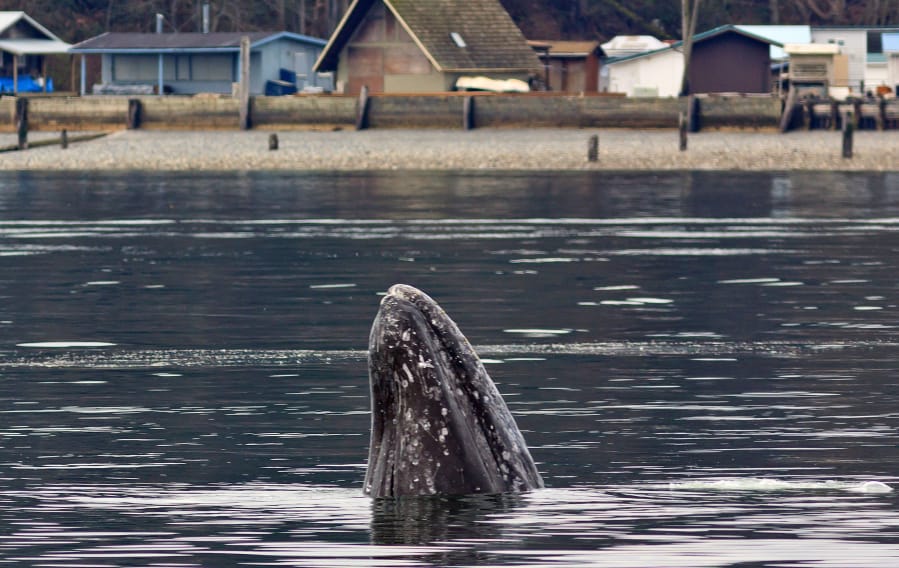Gray whales are lumbering back into Puget Sound, and scientists have plans in store for some of them.
The mighty grays undertake one of the longest migrations of any mammal, traveling from Arctic feeding grounds to calving areas in Mexico, then back north again come spring.
A small group of about a dozen whales pause along the way, sticking around in northern Puget Sound typically from March through May, though some arrive earlier, and linger longer. These whales, nicknamed “Sounders,” feed on ghost shrimp, snuffling large pits in the mud in the intertidal zone along shore.
The Sounders are beloved locals, such as Little Patch, a male gray whale returning to Puget Sound every year since 1991. Little Patch is back already this year, along with at least three other Sounders recently seen near Whidbey Island. They are a little early this year, and their return this year is of particular interest.



